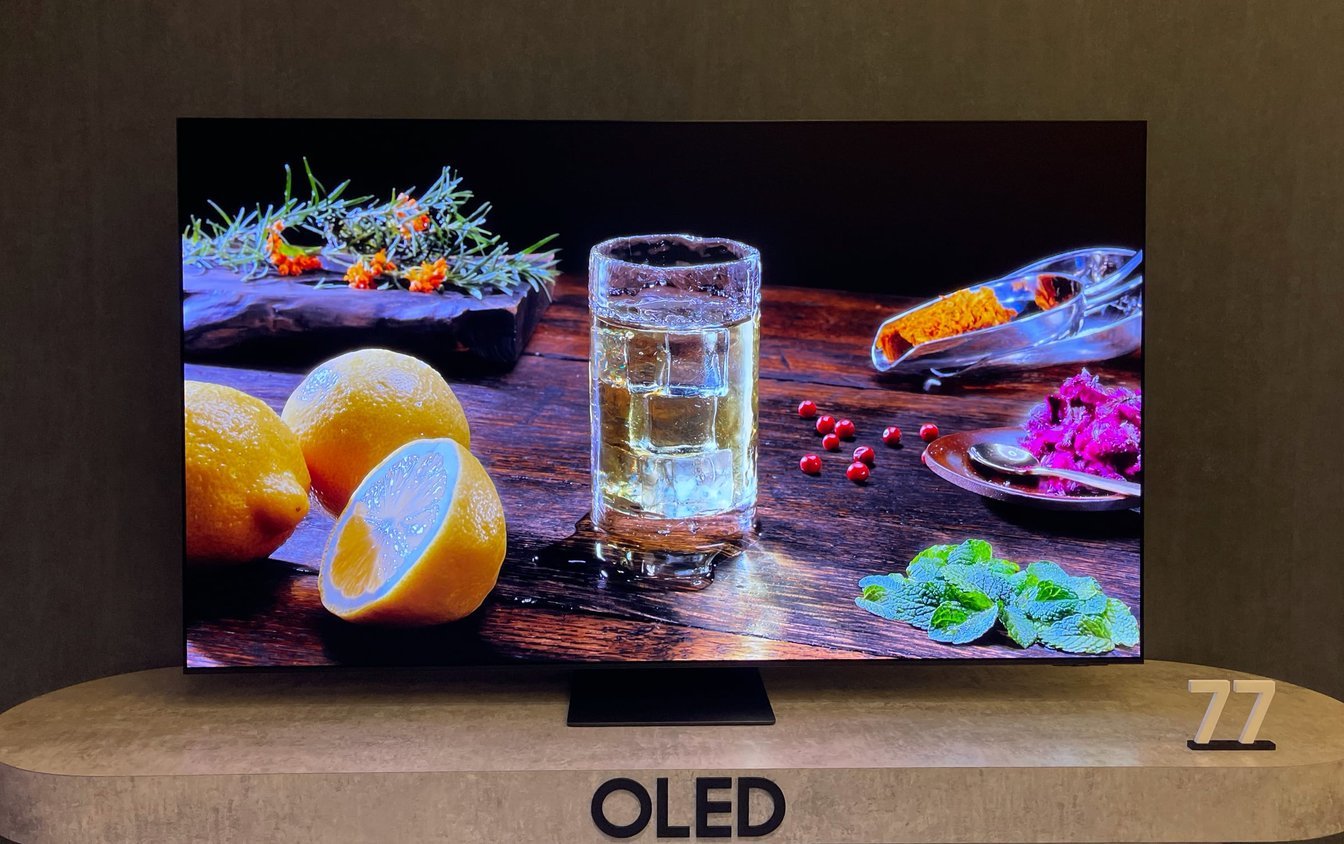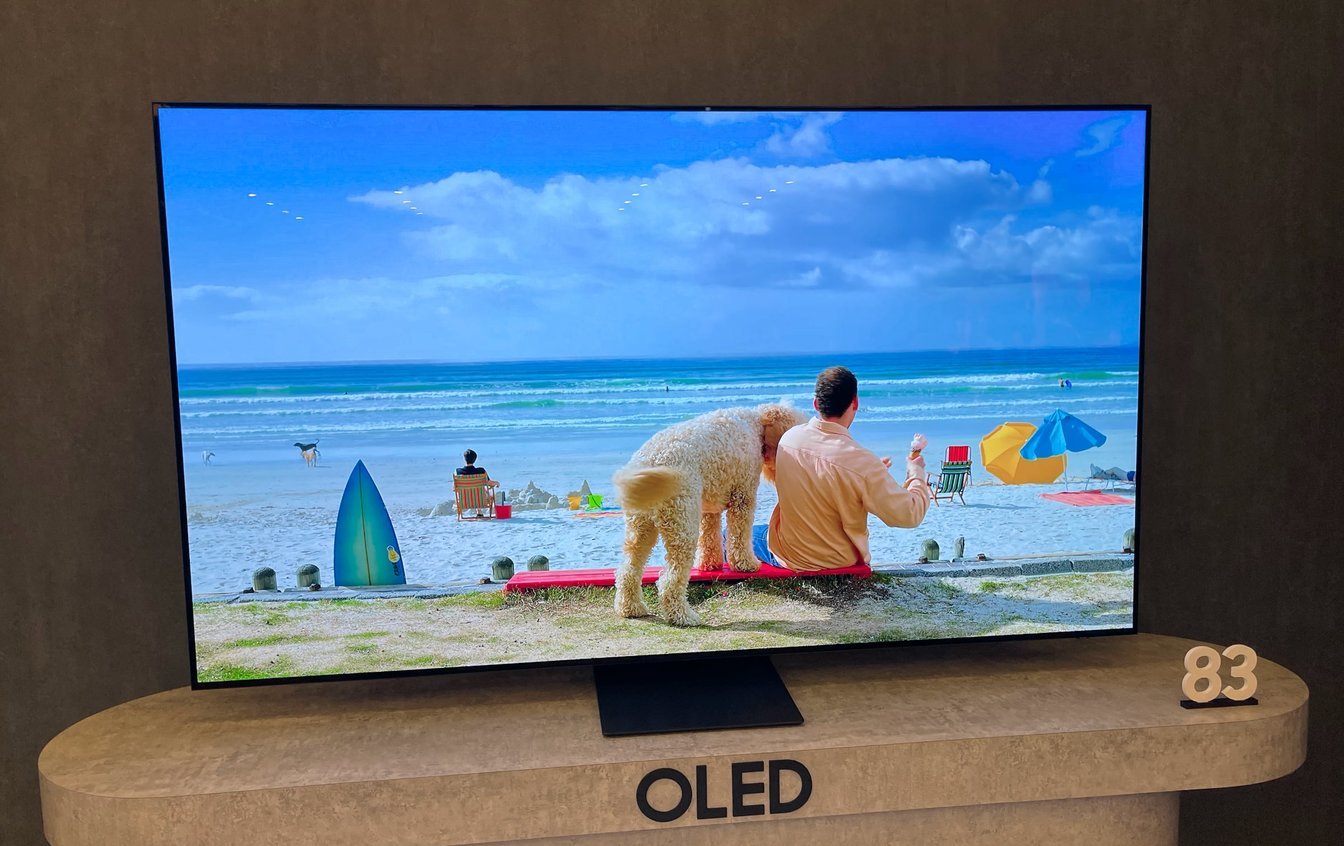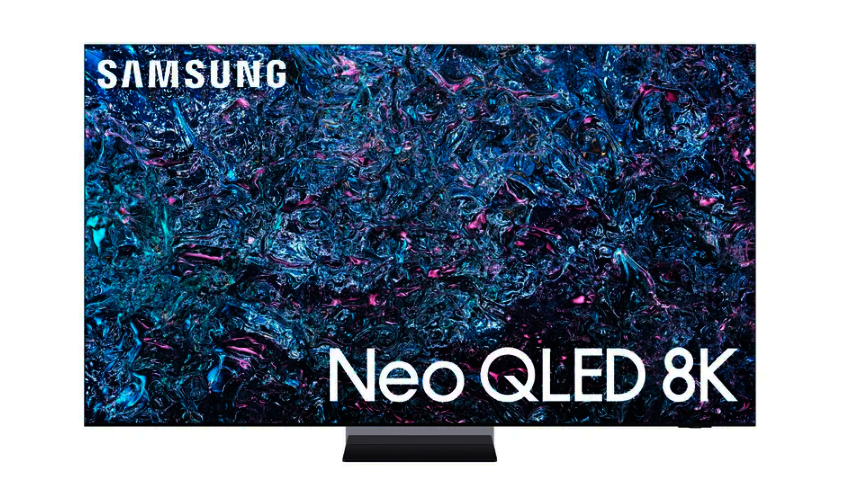Samsung Electronics has broken with its usual tradition and announced its entire range of TVs for 2024 one day before the exhibition opens its doors. Today’s announcements lifted the lid on Samsung’s latest QD-OLED TVs, the S95D and S90D, as well as a host of new Neo QLED TVs with Mini-LED backlights.

The company’s OLED range is the most anticipated as the S95C and S90C were among two of the best new televisions announced last year, receiving rave reviews from HDTVTest and other websites. Many experts even rated the S90C ahead of LG’s best OLED TVs, and so Samsung may have felt it faced a tough ask to build on those successes.
But build on them it has. The company’s newest OLED TVs are equipped with what Samsung says is a 3rd generation QD-OLED panel that delivers a brightness boost of 20% compared to last year’s models. That would suggest the new TVs are somewhat less bright than the 3,000 nits peak brightness claimed by Samsung Display claimed earlier today in a separate press release, but it is possible that Samsung Electronics is referring to overall brightness.
In any case, the S95D and S90D QD-OLED TVs will certainly be brighter and adding to the excitement is the inclusion of an anti-glare screen coating referred to as OLED Glare Free, which aims to eliminate on-screen reflections. Unfortunately, this coating appears to be exclusive to the S95D only, with the S90D instead coming with a matte OLED screen. Samsung also says the coating won’t impact contrast or viewing angles.
Samsung also confirmed the S95D and S90D will feature a 4K 144Hz panel, in-line with LG’s new OLED displays. They’ll support both FreeSync Premium Pro and FreeSyn Premium for rapid, flicker-free gaming, and they’ll come with the all new Game Bar 4.0, which introduces a new AI Auto Mode that sees the Game Bar automatically adjust the picture and sound according to the specific game genre.
In terms of screen sizes, Samsung is once again offering three options – 55-inches, 65-inches and 77-inches.
Many agreed that the Samsung S95C was a big step up compared to its predecessor, the S95B, thanks to the superior brightness, higher contrast levels and bolder colours of its all-new QD-OLED display, while the S90C introduced the new display technology at a more affordable price tag, comparable with LG’s C3 OLED TV. As such, there are lofty expectations regarding this year’s models.

It’s for this reason that we’re excited about the proposed higher brightness and anti-glare screens. That’s because reflections can be a big problem on some OLED TVs. If these can be eradicated, Samsung’s QD-OLED displays may well be the perfect choice for brighter living rooms.
Despite these new features, the rest of the S95D’s and S90C’s specifications seem pretty similar to last year’s models, with the same speaker configuration and power output, for example. The gaming features, with the exception of the 144Hz refresh rate, are the same as last year’s and there’s still no support for Dolby Vision.
Samsung Neo QLED TVs
In addition to its QD-OLED models, Samsung also unveiled its new range of Neo QLED Mini-LED TVs, which are based on quantum-dot LCD displays with complex backlighting technology.
The flagship in this range is the QN900D series, which succeeds last year’s QN900C. It’s an 8K model that’s available in 65-inch to 85-inch sizes, and is said to be the “slimmest, most premium 8K TV” ever to go on sale to consumers. It features a new, ultra-slim metal Infinity Air Stand and a mirror-like finish that creates a kind of “floating”in mid-air effect that should certainly appeal to those who like to buy consumer electronics with style. There’s also a redesigned Connect Box that features a more compact and modular form, hiding it more effectively from view.

The onboard 8K AI Upscaling Pro technology will help to convert 4K content to 8K, while Real Depth Enhancer Pro is designed to boost contrast performance, working in tandem with the Mini-LED backlights. There’s also a new AI Motion Enhancer Pro technology that intelligently applies processing when the viewer is watching live sports content, adapting to the specific sport being viewed.
The Tizen operating system has been updated, and the QN900D is also Samsung’s first ever TV to support Variable Refresh Rates at up to 4K 240Hz.
Alongside the QN900D, there is also a brand new QN800D series of 8K TVs, with sizes also ranging from 65-inches to 85-inches.
Stepping down to 4K, and the best TV here is the QN90D, followed by the QN85D. The QN90D TVs will be available in sizes ranging from 43-inches all the way up to 98-inches, while the latter has a narrower range of 55-inches to 85-inches.
They’re likely to be beautiful TVs in any case, sporting Samsung’s new Neural Quantum Processor with 4K upscaling and other tech such as the Real Depth Enhancer Pro feature, the updated Gaming Hub and Game Bar.

Samsung The Frame
Last but not least, Samsung announced a new version of its extremely popular and now fairly iconic The Frame TV, which doubles as an art frame when not in use.
According to Samsung, the 2024 edition of The Frame is getting some nice new features, including Pantone Art Validated colours. The Frame doesn’t have the most premium display tech, as it uses a regular QLED panel, but the Pantone feature should ensure that the colours of the digital art it displays are more realistic, matching their real-world counterparts more accurately.
In addition, there’s a new Curator Picks streaming experience that introduces a Netflix-style art library to the TV. Users will experience this as a revolving selection of artwork that can be streamed with or without a subscription to the Samsung Art Store. Finally, The Frame becomes more energy efficient when its in art mode, with the refresh rate being reduced to 60Hz from 120Hz when digital art is being displayed, before bumping it back up when the user is watching a movie or a show.